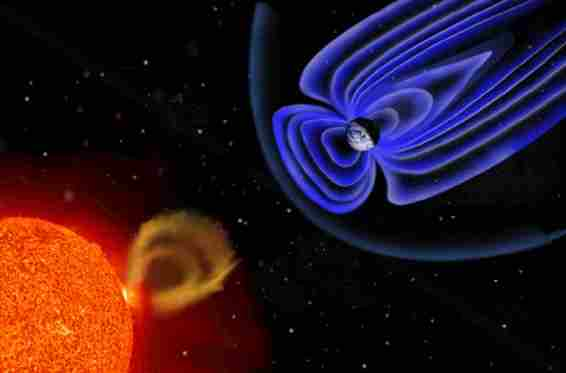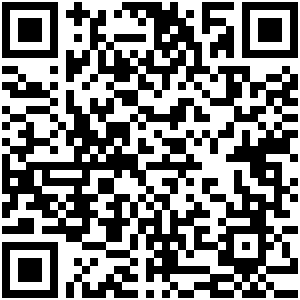 An Introduction to Space Weather and the Space Weather Prediction Center
An Introduction to Space Weather and the Space Weather Prediction Center
In order to protect people and systems that might be at risk from space weather effects, we need to understand the causes of space weather.
The sun is the main source of space weather. Sudden bursts of plasma and magnetic field structures from the sun's atmosphere called coronal mass ejections (CME) together with sudden bursts of radiation, or solar flares, all cause space weather effects here on Earth.
Space weather can produce electromagnetic fields that induce extreme currents in wires, disrupting power lines, and even causing wide-spread blackouts. Severe space weather also produces solar energetic particles, which can damage satellites used for commercial communications, global positioning, intelligence gathering, and weather forecasting.

The strongest geomagnetic storm on record is the Carrington Event of August-September 1859, named after the British astronomer Richard Carrington. During this event currents electrified telegraph lines, shocking technicians and setting their telegraph papers on fire; and Northern Lights (electrically charged particles from the sun that enter Earth's atmosphere) were visible as far south as Cuba and Hawaii.
Another significant space weather event took place on March 13,1989; a powerful geomagnetic storm set off a major power blackout in Canada that left six million people without electricity for nine hours. According to the North American Electric Reliability Corporation (NERC), the flare disrupted electric power transmission from the Hydro Québec generating station and even melted some power transformers in New Jersey.
Space weather prediction services in the United States are provided primarily by NOAA's Space Weather Prediction Center (SWPC) and the U.S. Air Force's (USAF) Weather Agency (AFWA), which work closely together to address the needs of their civilian and military user communities. The SWPC draws on a variety of data sources, both space and ground-based, to provide forecasts, watches, warnings, alerts, and summaries as well as operational space weather products to civilian and commercial users.
According to unpublished FEMA documents obtained by Government Attic, a FOIA (Freedom of Information Act) database and non-profit organization, the Department of Homeland Security agency once mapped out a disaster plan for the occurrence of another geomagnetic “super storm” like the one the occurred in 1859.
Before Space Weather Occurs
Space weather can have an impact on our advanced technologies which has a direct impact on our daily lives. The main area of concern will most likely be our nation's electric power grid. Northern territories are more vulnerable to these effects than areas farther south. Generally, power outages due to space weather are very rare events, but evidence suggests that significant effects could occur. These power outages may have cascading effects, causing:
- Loss of water and wastewater distribution systems
- Loss of perishable foods and medications
- Loss of heating/air conditioning and electrical lighting systems
- Loss of computer systems, telephone systems, and communications systems (including disruptions in airline flights, satellite networks and GPS services)
- Loss of public transportation systems
- Loss of fuel distribution systems and fuel pipelines
- Loss of all electrical systems that do not have back-up power
To begin preparing, you should build an emergency kit and make a family communications plan. Other steps you can take include:
- Fill plastic containers with water and place them in the refrigerator and freezer if there's room. Leave about an inch of space inside each one, because water expands as it freezes. This chilled or frozen water will help keep food cold during a temporary power outage.
- Be aware that most medication that requires refrigeration can be kept in a closed refrigerator for several hours without a problem. If unsure, check with your physician or pharmacist.
- Keep your car tank at least half full because gas stations rely on electricity to power their pumps.
- Know where the manual release lever of your electric garage door opener is located and how to operate it. Garage doors can be heavy, so know that you may need help to lift it.
- Keep a key to your house with you if you regularly use the garage as the primary means of entering your home, in case the garage door will not open.
- Keep extra batteries for your phone in a safe place or purchase a solar-powered or hand crank charger. These chargers are good emergency tools to keep your laptop and other small electronics working in the event of a power outage. If you own a car, purchase a car phone charger because you can charge your phone if you lose power at your home.
- If you have a traditional landline (non-broadband or VOIP) phone, keep at least one non-cordless receiver in your home because it will work even if you lose power.
- Prepare a family contact sheet. This should include at least one out-of-town contact that may be better able to reach family members in an emergency.
- Make back-up copies of important digital data and information, automatically if possible, or at least weekly.
The NOAA Space Weather Scales report three categories of solar effects. These scales communicate current and future space weather conditions, and their possible effects on people and systems. Similar to the Saffir-Simpson Hurricane Wind Scale, the NOAA space weather scales correlate space weather events with their likely effects on technological systems. As shown in the table below, the scales describe the environmental disturbances for three event types: Geomagnetic Storms (G-scale), Solar Radiation Storms (S-scale), and Radio Blackouts (R-scale). The scales have numbered levels, analogous to hurricanes, tornadoes, and earthquakes that convey severity.
| Description of Space Weather Scale | Minor -- Extreme | ||||
| Geomagnetic Storms: disturbances in the geomagnetic field caused by gusts in the solar wind that blows by Earth. | G1 | G2 | G3 | G4 | G5 |
| Solar Radiation Storms: elevated levels of radiation that occur when the numbers of energetic particles increase. | S1 | S2 | S3 | S4 | S5 |
| Radio Blackouts: disturbances of the ionosphere caused by X-ray emissions from the Sun. | R1 | R2 | R3 | R4 | R5 |
NOTE: The vast majority of "5" level events will not cause catastrophic damages to the electric grid. On average, the Earth is impacted by such storms about four times during every 11-year solar cycle, so many large storms have impacted the planet since the Carrington Storm with much less signification impact.
For more information visit NOAA Space Weather Scales.
- Watches are used for making long-lead predictions of geomagnetic activity.
- Warnings are used to raise the public's level of alertness based on an expectation that a space weather event is imminent.
- Alerts indicate that the observed conditions, highlighted by the warnings, have crossed a preset threshold or that a space weather event has already started.
- Follow energy conservation measures to keep the use of electricity as low as possible, which can help power companies avoid imposing rolling blackouts during periods when the power grid is compromised.
- Follow the Emergency Alert System (EAS) instructions carefully.
- Disconnect electrical appliances if instructed to do so by local officials.
- Do not use the telephone unless absolutely necessary, during emergency situations keeping lines open for emergency personnel can improve response.
Throw out unsafe food
- Throw away any food that has been exposed to a temperature of 40° F (4° C) or higher for 2 hours or more or that has an unusual odor, color, or texture. When in doubt, throw it out!
- Never taste food or rely on appearance or odor to determine its safety. Some foods may look and smell fine, but if they have been at room temperature too long, bacteria causing food-borne illnesses can start growing quickly. Some types of bacteria produce toxins that cannot be destroyed by cooking.
- If food in the freezer is colder than 40° F and has ice crystals on it, you can refreeze it.
- If you are not sure food is cold enough, take its temperature with a food thermometer.
HF Radio Communications
Space weather impacts radio communication in a number of ways. At frequencies in the 1 to 30 mega Hertz range (known as “High Frequency” or HF radio), the changes in ionospheric density and structure modify the transmission path and even block transmission of HF radio signals completely. These frequencies are used by amateur (ham) radio operators and many industries such as commercial airlines. They are also used by a number of government agencies such as the Federal Emergency Management Agency and the Department of Defense.
There are several types of space weather that can impact HF radio communication. In a typical sequence of space weather storms, the first impacts are felt during the solar flare itself. The solar x-rays from the sun penetrate to the bottom of the ionosphere (to around 80 km). There the x-ray photons ionize the atmosphere and create an enhancement of the D layer of the ionosphere. This enhanced D-layer acts both as a reflector of radio waves at some frequencies and an absorber of waves at other frequencies. The Radio Blackout associated with solar flares occurs on the dayside region of Earth and is most intense when the sun is directly overhead.
Another type of space weather, the Radiation Storm caused by energetic solar protons, can also disrupt HF radio communication. The protons are guided by Earth’s magnetic field such that they collide with the upper atmosphere near the north and south poles. The fast-moving protons have an affect similar to the x-ray photons and create an enhanced D-Layer thus blocking HF radio communication at high latitudes. During auroral displays, the precipitating electrons can enhance other layers of the ionosphere and have similar disrupting and blocking effects on radio communication. This occurs mostly on the night side of the polar regions of Earth where the aurora is most intense and most frequent.
More information on solar activity from an amateur radio operator’s perspective is available at http://www.aoc.nrao.edu/~pharden/hobby/FDIM81.pdf






